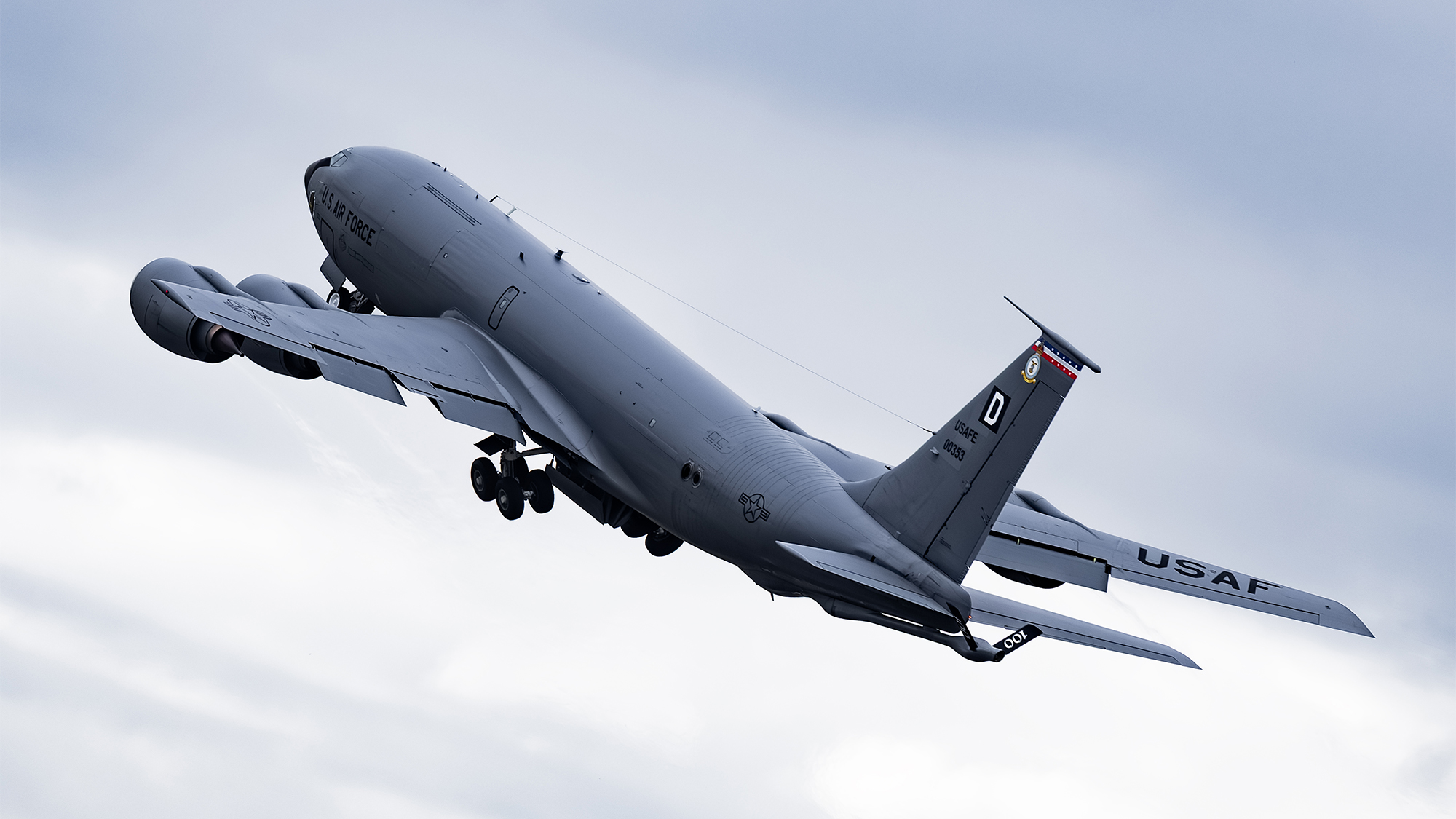Glider Squawk Code Advised Following KC-135 Close Call

A Near-Collision Incident Sparks Calls for Better Glider Identification
A recent near-miss between a U.S. Air Force KC-135 Stratotanker and a glider over Eastern England has reignited discussions about the need for a specific squawk code to identify gliders in shared airspace. The incident, which occurred on April 8, 2025, highlights the challenges of managing increasingly complex airspace and the importance of clear communication between different types of aircraft.
The KC-135R Stratotanker, part of the 100th Air Refueling Wing based at RAF Mildenhall, was conducting circuit training when the pilot noticed a Jonker JS-1 glider ahead on a converging path. The pilot executed a 30-degree banked turn to the right to avoid a potential collision. According to the pilot, the two aircraft came within 100 feet (30 meters) of each other, but data from the Airprox Board suggested the distance was as close as 50 feet (15 meters). Crew members on the Stratotanker confirmed that without the evasive maneuver, a collision was likely.
This incident was classified as a Category A Airprox, indicating a serious risk of collision. The glider pilot, who assessed the situation as low-risk, was flying outside of Mildenhall’s air traffic zone and was not required to communicate with air traffic control. Additionally, the glider’s transponder was disabled to conserve battery power, a common practice for gliders due to their limited electrical systems. However, this also meant the glider was not visible on secondary radar, increasing the risk of an encounter with other aircraft.
The Need for a Dedicated Squawk Code
Despite the existence of squawk codes for various specialized flights—such as parachute drops, target towing, and search and rescue—there is currently no designated code for gliders in the UK. This gap in identification protocols has led to calls for a specific squawk code to be assigned. The glider pilot involved in the incident proposed the idea, and the Airprox Board included it as a recommendation to the UK Civil Aviation Authority.
The goal of introducing a dedicated code is to encourage more glider pilots to keep their Mode S transponders enabled, thereby improving visibility to air traffic controllers. While primary radar can detect non-transponding aircraft, gliders often have a small radar cross-section and operate at low altitudes, making them difficult to distinguish from ground clutter such as buildings, wind turbines, and antennas.
Lessons from the Incident
The Airprox Board emphasized that the avoidance of a collision in this case was largely due to luck. Aviation investigations typically follow a blameless culture, focusing on analyzing what went wrong and how to prevent similar incidents in the future rather than assigning fault. This approach encourages pilots to report incidents openly, contributing to safer airspace management.
The incident also underscores the growing complexity of UK airspace, particularly in regions with high military activity. The Eastern UK, home to several military bases, sees frequent air traffic, increasing the likelihood of close encounters. In 2024 alone, the Airprox Board recorded 298 incidents, with 27 classified as Category A—indicating a serious risk of collision.
Broader Implications for Aviation Safety
While the KC-135 incident is notable, it is not isolated. Similar events have occurred in the past, including a 2024 incident where a KC-135 came within 600 feet of an Airbus C-295 off the East coast of Scotland. Another incident involved a KC-135 coming close to a Grob G115 in 2023.
These incidents highlight the need for improved coordination between military and civilian aviation. With more electrically powered aircraft entering the market, the industry must ensure that essential safety systems, such as transponders, remain operational throughout the entire flight. Pilots should not be forced to disable critical features due to power constraints, as doing so increases the risk of collisions.
Conclusion
The near-collision over Eastern England serves as a reminder of the challenges faced by pilots and air traffic controllers in managing shared airspace. While the introduction of a dedicated squawk code for gliders could enhance safety, broader efforts are needed to address the complexities of modern airspace. As technology evolves, the aviation industry must continue to adapt, ensuring that all aircraft—whether commercial, military, or recreational—are clearly identified and safely integrated into the national airspace system.

Posting Komentar untuk "Glider Squawk Code Advised Following KC-135 Close Call"
Posting Komentar